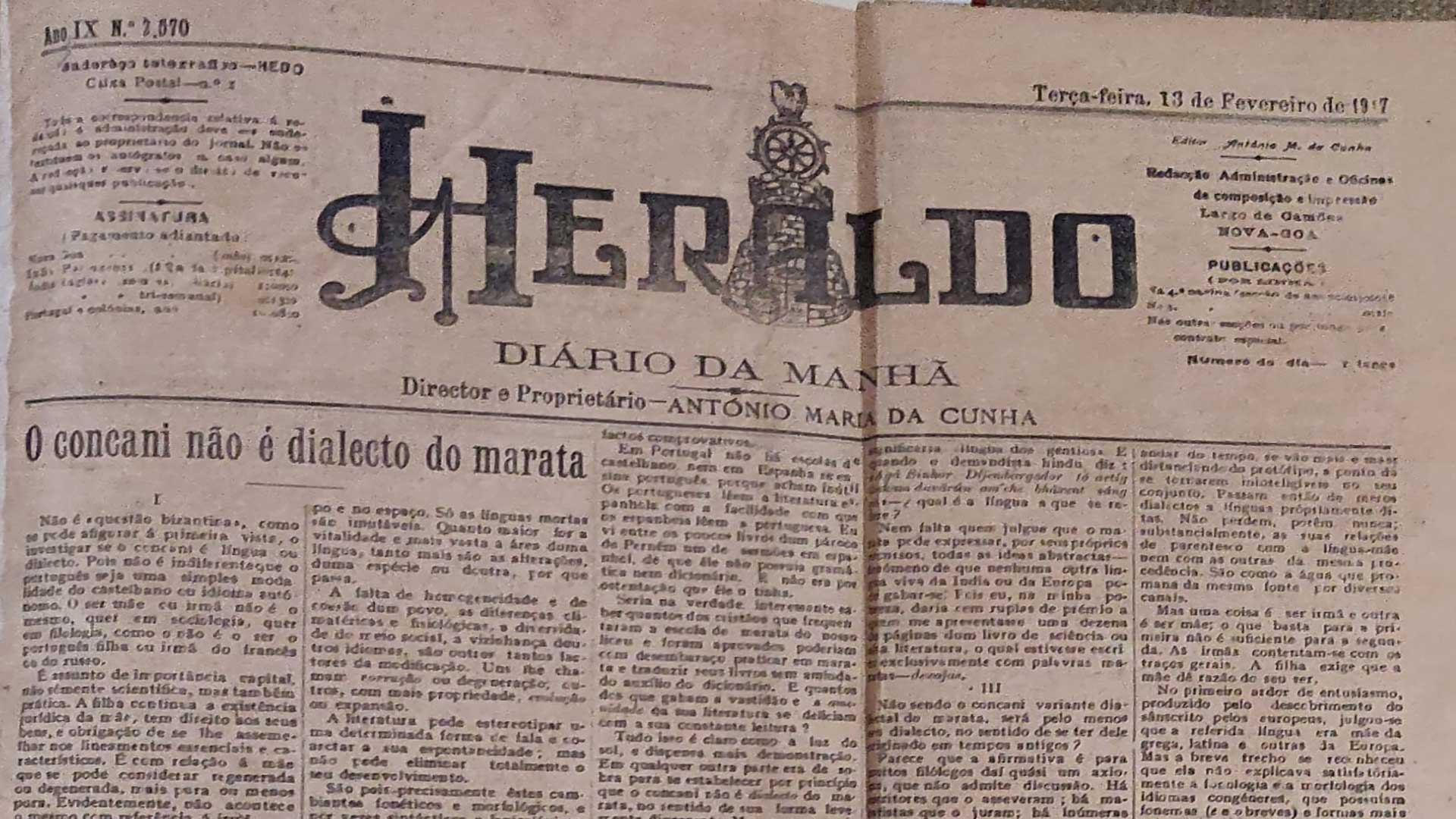Konkani is not a dialect of Marathi - 3
Part 3 of "O concani não é dialecto do marata", by Mgr. Sebastião Rodolfo Dalgado, in Heraldo, Pangim, Goa, Year IX, No. 2570, 13 February 1917, p. 1)
III
Since Konkani is not a dialectal variant of Marathi, would it at least be a dialect, in the sense that it originated from the Marathi in ancient times?
It seems that for expert philologists there, the assertion is almost an axiom, which admits of no discussion. There are writers who declare it; there are Marathists who swear by it; there are many obvious analogies between one speech and the other. What more can one want?
But there are also many analogies between Gujarati and Marathi. Therefore, one is a dialect of the other! There are many points of contact between Portuguese and Italian. Therefore, one has derived from the other! There is almost no Arabic word that is not used or cannot be used in Persian. Therefore, both languages belong to the same family, Semitic or Aryan! Konkani also seems to have similarities with Gujarati, Hindi, Sindhi, Bengali, Oriya, Punjabi, Kashmiri. Therefore, it is a daughter of them all! I do not know if it was for this reason that someone has said that she is almost a “daughter of Marathi”, or if because she has not yet fully emerged from her mother's womb.
It would in fact be surprising if there were no similarities between the sister languages; they would not be from the same family. But partial similarity does not necessarily explain derivation or affiliation. Much more is needed for that. English has many French and Latin words and phrases, and nobody till date has thought of including it among the Romance languages. A language that spreads over a vast area, by absorption, colonization or conquest, naturally and unwittingly produces regional changes that can be easily understood. With the passage of time, they move away further and further from the prototype, to the point of becoming unintelligible as a whole. They then change from mere dialects to languages in their own right. However, they never substantially lose their kinship with the mother language or with others of the same origin. They are like water flowing from the same source by different channels.
But it is one thing to be a sister and another to be a mother; what is good enough for the former is not good enough for the latter. Sisters are content with the broad strokes; a daughter demands that the mother give a reason for her existence.
In the first ardour of enthusiasm, produced by the discovery of Sanskrit by the Europeans, it was believed that the said language was the mother of Greek, Latin and others languages of Europe. But soon it was found that it did not satisfactorily explain the phonology and morphology of like languages, which had phonemes (short e and o) and more primitive forms. It was then acknowledged that only the elder sister had the key to the resolution of various linguistic problems. And it was concluded that there might be another language without historical monuments from which Sanskrit, Iranian, Greek, Latin, Celtic, etc. have derived. The existence of the Indo-European or Proto-Aryan is now an established and inescapable point, by the principle of causality.
I have no doubt that this is Greek to several of my enlightened countrymen. A Sanskrit scholar asked me how one might explain the opposition by the Hindus of Goa (whose progress has of late been praised) to the introduction of the Sanskrit chair at the Goa Lyceum, whereas they should have been more committed! I had to contend with regret that the real reason would be the fallacy or patravôll of the Marathi chair, and the opponents some kind of young Turks who try to jump, as they say in Konkani, over the herb plants: tsannyânchím jhâdám uddunk. For I have always regarded the Hindus as staid people, and I would not ascribe to them such foolishness.
(Published in Revista da Casa de Goa, Series II, No. 25, Nov-Dec 2023, pp. ___)
